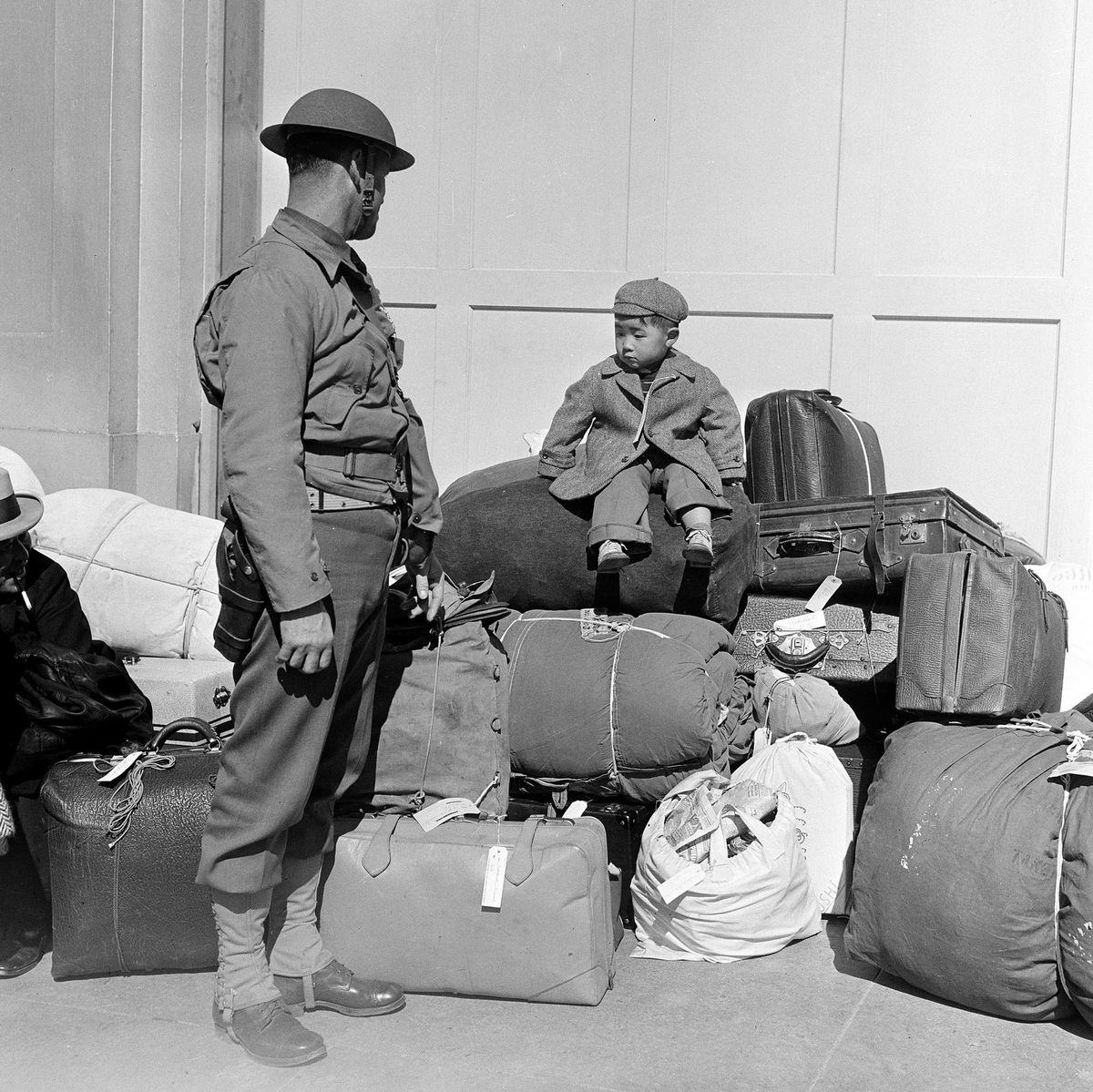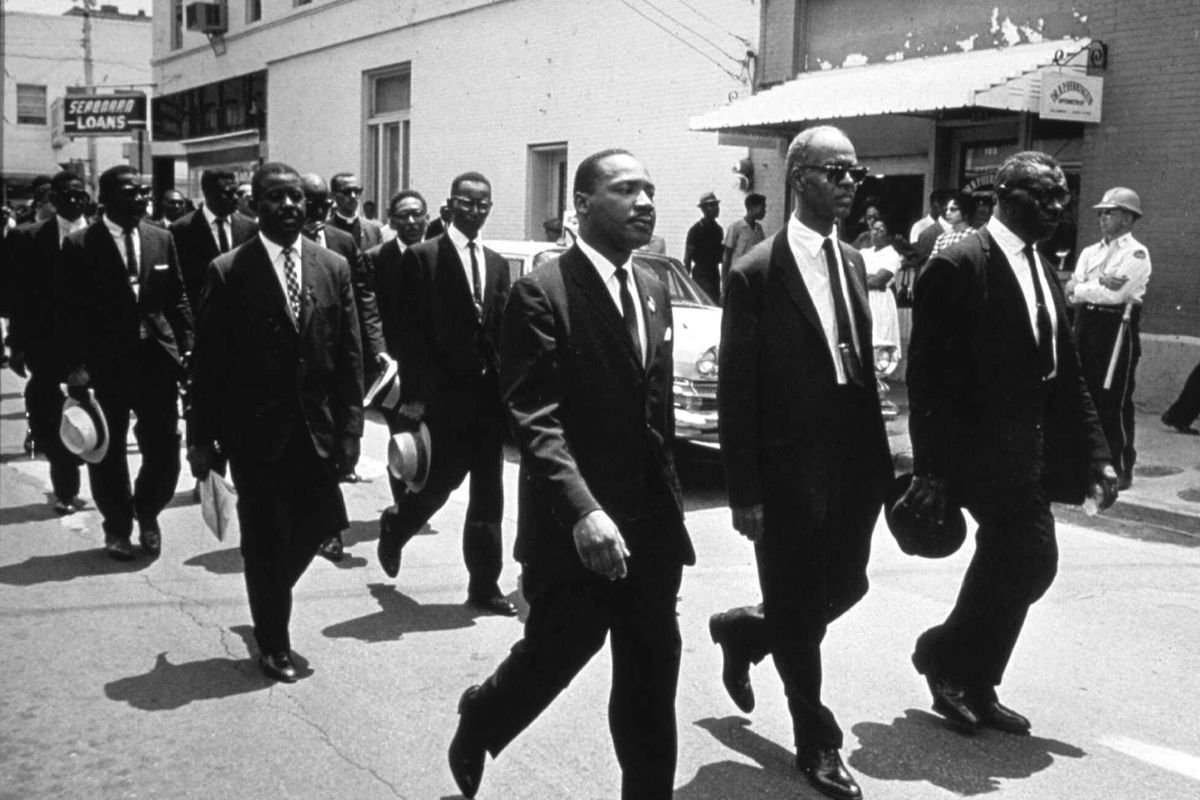Spokane Public Schools creates new, inclusive history course for 11th graders
A boy sits on a pile of baggage as he waits for his parents, as a military policeman watches April 6, 1942, in San Francisco. (STF)
Savannah Gordon credits her family and social media for her knowledge of her cultural identity as a young Black woman.
“There are so many stories that I’m just learning about, like Juneteenth,” said Gordon, an incoming sophomore at North Central High School, referring to the national recognition of the day the last slaves learned of their freedom. “I’ve only just known about it these past two years of my life.”
A push led by students in a multicultural club at North Central, and a panel advising Spokane Public Schools on diversity initiatives, are hoping to bring those stories into the classroom. The Spokane School Board of Directors took the first step Wednesday to offering “American Perspectives,” a course that will serve as an equivalent for the traditional U.S. history course taken by 11th graders covering a period from 1877 to the present. Instructors at each of the district’s high schools, including the On Track Academy and Community School, have expressed a desire to teach the class, which will use primary documents and other readings assembled by educators to supplement the traditional textbook, said Heather Bybee, the district’s head of curriculum.
“There was no history book that we could buy from a publisher that shared the story that represented the kids that we had been talking to,” she said.
The idea for the course, which will be offered as an option pending board approval of the 2020-21 school year budget, had its genesis in a student club called Shades at North Central High School and work done by the district’s Diversity Advisory Council. The need for a history class that told a more inclusive story of American history had been identified well before current discussions of race and history brought on by increased attention on police brutality against Black people and removal of monuments nationwide of historical figures holding racist views.
“We went through a whole year of having meetings, having elementary school teachers share with us their curriculum, and the books they used,” said Michaela Brown, chair of the district’s Diversity Advisory Council. The panel also looked at what was being taught in middle and high schools.
At the same time, after-school multicultural club Shades at North Central was working its way through a history curriculum focused on racism. Adviser Shamerica Nakamura found that her students hadn’t received instruction in history courses on some key concepts, including the racist history behind blackface in minstrel shows.
“I told them history has a domino effect,” Nakamura said. “If you’re missing things, you don’t know why these dominoes are falling as they do.”
Based on the club’s suggestion, Bybee said the district began developing what would become the American Perspectives course.
The course will provide materials that supplement traditional history instruction, and focus on groups and events that have received little if any classroom focus in past years. Some examples provided by Bybee during the period of World War II include instruction about the Tuskegee Airmen, the group of Black and Caribbean-born fighter pilots, the Navajo code talkers and the Bracero program, which brought Mexican-born farm workers to the United States to fill agricultural jobs and provide necessary supplies to civilians and the war effort.
Reference texts that will be used by instructors include books on the LGBTQ experience, feminists and young Latinx Americans.
Instructors worked to match the common core requirements of the 11th grade history course with what would be taught in American Perspectives, to ensure students could receive the same type of cultural experience in the classroom that they would have in the after-school club at North Central.
“We asked ourselves, how could kids in other clubs and sports be a part of this?” Bybee said.
Shades provides a space for students to share their experiences with their peers, Gordon said. Her older brother and sister were both part of the offering at North Central.
“We can talk about change, talk about how we want that change to happen and create that change,” she said.
Gordon’s mother, Carla, said she was thrilled the district would be offering a course that would add academic legitimacy to the experience of Black Americans.
“I will tell you that my children, sometimes, they’ve expressed the checkout in those classes,” Carla Gordon said of traditional history classes.
It’s been up to her and her husband, she said, to supplement instruction in schools on people including Dr. Martin Luther King Jr. and Rosa Parks with discussions of Medgar Evers, the Civil Rights leader assassinated five years before King, and Malcolm X.
Carla Gordon echoed the desire of Brown and Jaime Stacy, who mentors young women through the group Strong Women Achieving Greatness in the district, that the instruction taking place in the optional 11th grade history course be extended through other areas of the curriculum.
“Our hope and goal is that all history courses become all-integrated,” Carla Gordon said, adding that she’d prefer the inclusive instruction occur in even earlier grades.
Stacy, who said she’d encountered some students who didn’t recognize prominent Black leaders including Harriet Tubman, said that while she appreciated the class being offered, allowing students to opt in to the course could create further division among peers.
“They’re going to have a different language,” Stacy said of students who choose to take the American Perspectives course. “Their language will be different in regards to American history.”
School Board Member Mike Wiser raised the question of incorporating the curriculum into other areas of instruction in the district prior to their unanimous vote to adopt it.
“When are we going to be able to make sure the regular curriculum also reflects most of these additional stories?” Wiser asked.
Bybee said the supplemental approach was taken so that the curriculum could be adopted quickly. It’ll cost about $15,000 the first year to provide the course in high schools.
“We’re looking at all of our curriculum, particularly English and history, as the first places to start where we’re building in supplemental options across the span,” she said.
Nakamura said students were surprised the district listened and responded to their concerns about history courses so quickly. A graduating senior in the Shades club looked at the curriculum this spring and burst into tears, Nakamura said, telling educators it was the first time she’d seen herself in history materials being prepared by the district.
For sophomore Savannah Gordon, it’s the first step toward a more inclusive community.
“What we need to focus on is schools, because that’s where it starts,” she said. “I think it’ll help society overall.”



